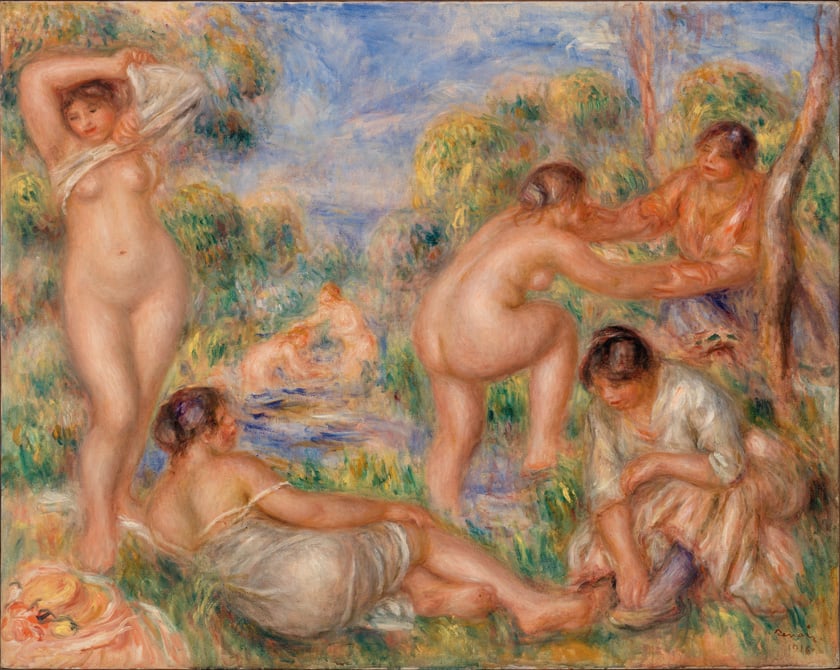Art
Travel news: Local cultural events, live music and art classes – The Globe and Mail


Lekwungen traditional dancers in Saanich, B.C., in 2019.
Kevin Light/Handout
An expanded Culture Days 2020 launches Sept. 25 across Canada with the theme Unexpected Intersections, offering free livestream and in-person arts and culture experiences. Concerts, art classes, dance performances and self-guided tours are some of the options available until Oct. 25. Highlights include Nuit Blanche in Winnipeg, Behind the Wall: Making of a collective mural by the Revelstoke Visual Arts Centre and the Yukon Arts Centre’s Waterfront Parade in Whitehorse.
Get a dose of live music at Vancouver’s Gastown Unplugged, a pop-up music series happening until the end of October. Wander the cobblestones or listen from a patio to local musicians at four locations including the Maple Tree Square Pop-Up Plaza.
At Vancouver’s Gastown Unplugged, listen from a patio to local musicians at four locations.
Gastown Unplugged/Handout
Supplement back to school with BIPOC history and stories: digital Doors Open Ontario has videos, virtual tours and photos from Canadian Black History sites such as Amherstburg Freedom Museum, Chatham-Kent Black Historical Society, Uncle Tom’s Cabin Historical Site and John Freeman Walls Underground Railroad Museum while Hot Docs at Home (hotdocs.ca) has launched For Viola, a documentary series focused on BIPOC stories and filmmakers, streaming for free.
Kimpton Hotels has introduced Chief Virtual Learning Officers (CVLO), helping families on vacation with remote learning. Reserve access to an on-property CVLO and get set up with complimentary desks, snacks and school supplies. Now available at Toronto’s Kimpton Saint George (kimptonsaintgeorge.com), the hotel currently offers a 15-per-cent discount on reservations made three days in advance for IHG members who book directly.
Writerfest in Kingston, Ont., in 2019.
Garrett Elliott/Handout
Keep up to date with the weekly Sightseer newsletter. Sign up today.
Art
Norman Lear's Art Goes to Auction – The New York Times


Norman Lear was best known for what he created on television, but he also appreciated the kind of art you can hang on the wall and collected his fair share over the years.
Lear died in December at 101. On May 16, his wife, Lyn, is selling seven of the producer’s prime pieces of artwork at Christie’s with a total estimate of more than $50 million.
The artworks will be featured in the auction house’s evening sale of 20th-century art, with additional works offered in the postwar and contemporary art day sales and subsequent auctions.
“It will be like letting go of old friends and moving on to make new friends,” Lyn Davis Lear said in a telephone interview, adding, “Norman’s philosophy was buy what you love, don’t buy anything thinking you’re going to make a lot of money.”
Norman Lear — whose string of hits included “All in the Family,” “The Jeffersons,” “Good Times” and “Maude” — mostly collected works from the 1950s through the 1980s and was particularly drawn to artists who blossomed in California, as he did.
“This is where he really flowered and was able to express himself,” Davis Lear said. “There was freedom about being in L.A.”
The Lears built a whole wall in their former Brentwood home to accommodate their Rauschenberg spread painting, Davis Lear said. And Norman gave her a painting by Mark Rothko for her birthday 20 years ago.
As for her late husband’s memorabilia, Davis Lear said she plans to sell that in future auctions.
The Christie’s sale includes David Hockney’s “A Lawn Being Sprinkled,” estimated at $25 million to $35 million, and Ed Ruscha’s “Truth” (estimated at $7 million to $10 million) as well as works by Ellsworth Kelly and Joseph Cornell.
“There is a pretty tight, fascinating link between the pictures and artists that Norman and Lyn gravitated toward and the shows he created,” Max Carter, Christie’s vice chairman of 20th and 21st-century art, Americas, said in an interview. “They’re about big ideas like truth and memory and time.”
Davis Lear said Norman particularly loved Ruscha’s “Truth,” since that was such an important theme for him. “Everything he did in television and in politics was all about finding meaning,” she said, “what was true and what wasn’t.”
Norman Lear’s early purchases were guided in large part by the producer and collector Richard Dorso, whom Davis Lear described as an “art mentor.”
“They would go around to the galleries,” she said, adding that her husband “just chose pieces that he loved.”
Also for sale is Roy Lichtenstein’s collage “I Love Liberty,” which the artist made to help support People for the American Way, Norman Lear’s liberal advocacy organization.
Davis Lear said that she looks forward to having their artwork enjoyed by others, particularly the pieces they didn’t have space to display. “I can’t bear for art to be in storage,” she said. “I just think it should be out there and be seen.”
Proceeds from the sale will go to the Lear Trust estate, Davis Lear said, as well as to his children and the funding of future art purchases. “I want to buy new artists that we can fill the walls with,” she said, “because I think there is such joy in that.”
Art
Art Bites: The Movement to Remove Renoir From Museums – artnet News
What’s the deal with Leonardo’s harpsichord-viola? Why were Impressionists obsessed with the color purple? Art Bitesbrings you a surprising fact, lesser-known anecdote, or curious event from art history. These delightful nuggets shed light on the lives of famed artists and decode their practices, while adding new layers of intrigue to celebrated masterpieces.
From Just Stop Oil to Free Palestine to P.A.I.N., recent times have seen art museums coopted as staging grounds for high-minded protest.
In 2015, however, the group of protesters that picketed outside Museum of Fine Arts in Boston had a simpler, less lofty target: Pierre-Auguste Renoir. Their demand? That museums remove his paintings from their walls. Their reasoning was rather straightforward: they argued Renoir was bad at art. (A protest at New York’s Metropolitan Museum of Art was soon to follow.)
The Renoir Sucks at Painting movement (if one can call it that) was the brainchild of Max Geller, and came to life after he encountered the sizable collection of Renoir paintings at Philadelphia’s Barnes Foundation. Its central outlet is an Instagram account that features close-ups of Renoir paintings accompanied by satirical, often long-winded critiques.
Armed with snobbish hipster fury and signage that read “God Hates Renoir,” “ReNOir,” and “We’re Not Iconoclasts, Renoir Just Sucks At Painting,” the group briefly received considerable media attention—though none from the institutions it was heckling. Fellow Renoir haters expressed their aesthetic sympathy online by posting photographs of themselves giving the middle finger to Renoir paintings, often accompanied with the hashtag #renoirsucksatpainting.


Renoir haters outside Boston’s Museum of Fine Arts. Photo: Lane Turner via Boston Globe
The furor prompted Renoir’s great-great-granddaughter Genevieve Renoir to chime in. She argued the free market had spoken clearly in favor of her ancestor’s talent. The market said something that sounded like, “$78 million at Sotheby’s for Bal du moulin de la Galette na na na-na na.” Geller responded by saying the free market lacked judgement and taste, citing TV commercials, climate change, and the destruction of sea otter habitats as evidence. Fair enough.
This points to the deeper purpose of Renoir Sucks at Painting, one that was generally lost beneath the media noise and pithy takedowns. Geller wasn’t trying to censor Renoir through ridicule. He was hoping to force museums into reconsidering the artistic merits of the paintings on their walls and make change, ideally in favor of non-white male painters. He called it “cultural justice.”


Pierre-Auguste Renoir, Bathing Group (1916). Courtesy of the Barnes Collection.
Though Geller’s approach was decidedly contemporary, his root sentiment wasn’t. People have long hated Renoir. The loathing has both moral and aesthetic substance. On moral grounds, Renoir’s innumerable dumb-faced, unflattering female nudes have seen him posthumously charged with sexism. Adding to the ignominy was his anti-Semitism, as shown by his stance in the Dreyfus affair.
And yet even the aesthetic charges are somewhat personal. Renoir, a ceramicist by training, fell in with a Parisian clique that included Alfred Sisley and Claude Monet, anti-academic artists who would become part of the Impressionist movement. Bold color and depictions of modern life were in. Formalism, florid rococo details, and grand mythological scenes were out.
The problem was, Renoir quite liked these old things—“I am of the 18th century,” he once said—and when times got financially tough, he backtracked and began painting saccharine, bourgeois portraits. It made him rich, an international star even. In short, he’s seen as a sellout.
Critics argue Renoir paid no attention to line or composition (he painted as though on a pot, the charge runs) and ignored the contemporary concerns of his day. Most damning, seemingly, is the accusation that Renoir’s paintings are pretty. Good art, of course, cannot simply be pretty.
One fan of Renoir’s pretty little paintings? Donald Trump. He claims to own Two Sisters (On the Terrace). It’s a fake, mind you.
Follow Artnet News on Facebook:
Want to stay ahead of the art world? Subscribe to our newsletter to get the breaking news, eye-opening interviews, and incisive critical takes that drive the conversation forward.
Art
New Art of Punjabi Exhibit – CTV News Barrie
-
Media22 hours ago
DJT Stock Plunges After Trump Media Files to Issue Shares
-
Business21 hours ago
FFAW, ASP Pleased With Resumption of Crab Fishery – VOCM
-
Media21 hours ago
Marjorie Taylor Greene won’t say what happened to her Trump Media stock
-
Business22 hours ago
Javier Blas 10 Things Oil Traders Need to Know About Iran's Attack on Israel – OilPrice.com
-



 Politics21 hours ago
Politics21 hours agoIn cutting out politics, A24 movie 'Civil War' fails viewers – Los Angeles Times
-
Art23 hours ago
It’s Time to Remove Father Rupnik’s Art – National Catholic Register
-
Business20 hours ago
Tesla May Be Headed For Massive Layoffs As Woes Mount: Reports – InsideEVs
-
Investment23 hours ago
A Once-in-a-Generation Investment Opportunity: 1 Top Artificial Intelligence (AI) Stock to Buy Hand Over Fist in April … – Yahoo Finance





